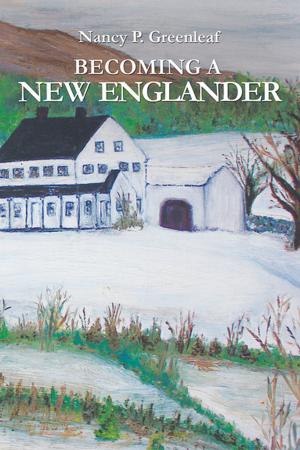Southern Families
Their Friends, Servants, Rivals, and Affairs 1901–1911
Fiction & Literature, Historical| Author: | Michael V.C. Alexander | ISBN: | 9781462887958 |
| Publisher: | Xlibris US | Publication: | July 21, 2011 |
| Imprint: | Xlibris US | Language: | English |
| Author: | Michael V.C. Alexander |
| ISBN: | 9781462887958 |
| Publisher: | Xlibris US |
| Publication: | July 21, 2011 |
| Imprint: | Xlibris US |
| Language: | English |
This novel is set in Perquimmons City, North Carolina, an imaginary town of roughly 5,500 people (slightly over 40 percent black). Although it doesnt ignore the serious racial problems of the early twentieth century, their depiction isnt the novels main purpose. Its main purpose is to describe the underlying tension between an extremely snobbish and aristocratic familythe Merrittswho live in one of the states few surviving antebellum mansions and whose forebears had dominated the area around Perquimmons City until the early 1880s. Then newcomers, with more education and greater technical skills, arrived in the area and, without making a conscious effort to do so, challenge the Merritts social and political leadership, which theyre determined to preserve. Thats an impossible task for them, however, because the current head of the Merritt family is hated for cheating at cards, showing no concern for the property of others, and his well-known practice of forcing himself on dozens of young black women who live in the old slave cabins behind his mansion and in a small enclave shortly beyond the long bend where West Main Street turns into the Edenton Road. That William Merritt forces himself on so many young black women is extremely galling to his wife Marguerite, whos almost as annoyed by his laziness and failure to keep their pasture fences in a state of good repair. In September 1906, almost two hundred of their dairy cows escape through large breaks in their fences shortly after midnight and wander through the towns best residential streets looking for food and water. The next morning, hundreds of families look out of their windows and see their yards littered with ugly cow pies and choice shrubs almost defoliated. The outrage against the Merritts reaches a fever pitch, and Marguerite is so annoyed at her husband because of his laziness and the occasional beatings she receives from him that she leaves him in the fall of 1906. After two months, she accepts a reconciliation with him out of financial necessity. Eighteen years before the novel opens early in 1901, Thomas Stanton, the youngest son of the founder of a chain of New England textile mills, moved to Perquimmons City and, with his fathers help, established a mill that employed over three hundred people, men and women, triggering a gradual transformation of the local economy. A much more important outsider, Dr. Joseph Hanford, a native of central North Carolina, arrived in 1895 and opened an office before marrying a local beauty, Julia Summerlin, who in short order became one of the towns leading hostesses and the mother of his two children. An unusually tolerant and conscientious man, Dr. Hanford insists on treating his black and white patients in his office, much to the discomfort of most of the whites who believe he should have set up segregated waiting rooms, which he never did out of deep personal conviction. The last important newcomer to arrive in town is William James Van Landingham, a New York financier whose second wife is Dr. Hanfords first cousin, Frances. (Her father, Joes uncle, had left North Carolina shortly after the Civil War in the hope of making a fortune on Wall Street.) For almost a year, the Van Landinghams had planned to build a winter home in Palm Beach, Florida. But shortly after northern and central Florida are devastated by a powerful hurricane in August 1910 and William Merritt is murdered two months laterBill Van Landingham had met the Merritts during a brief visit to Perquimmons City in February 1910 and found them insufferableBill and his wife decide to build their winter home in North Carolina and buy three adjacent tracts of land several miles east of Perquimmons City. With the help of a local contractor in January 1911, they retain a fine young architect from a nearby town to design their new home for them during the coming year. Shortly after the Van Landinghams develop permanent ties with the area, they donate a l
This novel is set in Perquimmons City, North Carolina, an imaginary town of roughly 5,500 people (slightly over 40 percent black). Although it doesnt ignore the serious racial problems of the early twentieth century, their depiction isnt the novels main purpose. Its main purpose is to describe the underlying tension between an extremely snobbish and aristocratic familythe Merrittswho live in one of the states few surviving antebellum mansions and whose forebears had dominated the area around Perquimmons City until the early 1880s. Then newcomers, with more education and greater technical skills, arrived in the area and, without making a conscious effort to do so, challenge the Merritts social and political leadership, which theyre determined to preserve. Thats an impossible task for them, however, because the current head of the Merritt family is hated for cheating at cards, showing no concern for the property of others, and his well-known practice of forcing himself on dozens of young black women who live in the old slave cabins behind his mansion and in a small enclave shortly beyond the long bend where West Main Street turns into the Edenton Road. That William Merritt forces himself on so many young black women is extremely galling to his wife Marguerite, whos almost as annoyed by his laziness and failure to keep their pasture fences in a state of good repair. In September 1906, almost two hundred of their dairy cows escape through large breaks in their fences shortly after midnight and wander through the towns best residential streets looking for food and water. The next morning, hundreds of families look out of their windows and see their yards littered with ugly cow pies and choice shrubs almost defoliated. The outrage against the Merritts reaches a fever pitch, and Marguerite is so annoyed at her husband because of his laziness and the occasional beatings she receives from him that she leaves him in the fall of 1906. After two months, she accepts a reconciliation with him out of financial necessity. Eighteen years before the novel opens early in 1901, Thomas Stanton, the youngest son of the founder of a chain of New England textile mills, moved to Perquimmons City and, with his fathers help, established a mill that employed over three hundred people, men and women, triggering a gradual transformation of the local economy. A much more important outsider, Dr. Joseph Hanford, a native of central North Carolina, arrived in 1895 and opened an office before marrying a local beauty, Julia Summerlin, who in short order became one of the towns leading hostesses and the mother of his two children. An unusually tolerant and conscientious man, Dr. Hanford insists on treating his black and white patients in his office, much to the discomfort of most of the whites who believe he should have set up segregated waiting rooms, which he never did out of deep personal conviction. The last important newcomer to arrive in town is William James Van Landingham, a New York financier whose second wife is Dr. Hanfords first cousin, Frances. (Her father, Joes uncle, had left North Carolina shortly after the Civil War in the hope of making a fortune on Wall Street.) For almost a year, the Van Landinghams had planned to build a winter home in Palm Beach, Florida. But shortly after northern and central Florida are devastated by a powerful hurricane in August 1910 and William Merritt is murdered two months laterBill Van Landingham had met the Merritts during a brief visit to Perquimmons City in February 1910 and found them insufferableBill and his wife decide to build their winter home in North Carolina and buy three adjacent tracts of land several miles east of Perquimmons City. With the help of a local contractor in January 1911, they retain a fine young architect from a nearby town to design their new home for them during the coming year. Shortly after the Van Landinghams develop permanent ties with the area, they donate a l















